Black Belt at Home Blog
Practicing at Home with Complete Shotokan Karate
- August 13, 2014
- Posted by: Jon Hodge
- Category: Shotokan Karate
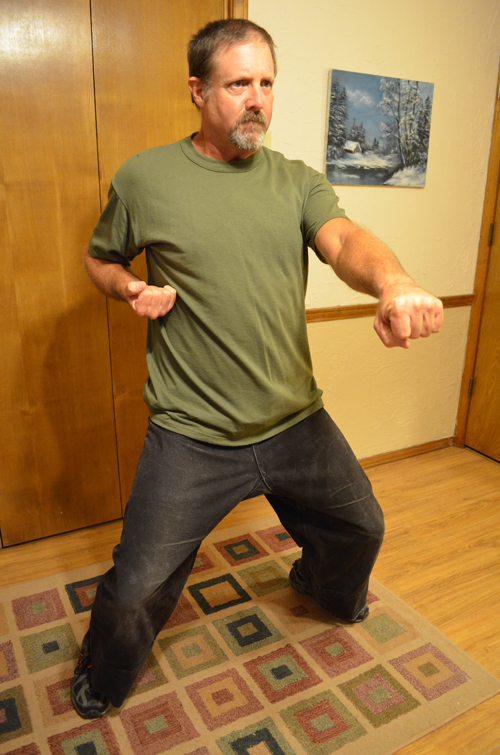
When I started martial arts training I was overweight and completely stressed out. I knew that I needed a change in my life for the benefit of my family and others. I went to my first class and after class as I walked out of the dojo, I was shaken by how poorly my body was conditioned. I had trouble with just about every exercise and technique we were given. I knew that in order to be successful I needed a personalized training program to go along with the class instruction I was receiving.
Becoming Aware of the Human Energy Bodies…
Let’s talk a bit about the four areas of the human system that may need some improvement. They are defined as the Mind, Body, Spirit and Emotional bodies. Regardless of why you are studying martial arts or any other area of life, understanding the four bodies is a key to balance and harmony in your life.
The Mind…
The Mind is the framework of your beliefs, ego and structure of how you think and what you do. In order to be successful in Complete Shotokan Karate or any other martial art the framework of you thoughts and habits has to be in alignment with what you are doing. Holding positive thoughts and focusing on the outcome of what you want is in the Mind. I found through the process of becoming a black belt I had to change the way I thought and viewed myself and others. I quit blaming others for my problems and started focusing on what I could do to improve myself. Don’t fool yourself, you are responsible for yourself and have the choice to change and create a positive outcome for yourself and others.
The Body…
Complete Shotokan Karate is a very physical endeavor. In order to function and become proficient in this martial art one needs to have total body physical fitness.Your need to have good core strength and cardio fitness. So when we look at the body for conditioning we can break the body down into areas to target for improvement. They are as follows:
- Upper Body – neck, arms, chest, upper back
- Mid Section – Abs, mid and lower back
- Lower body – Legs and Glutes
Among these areas we need flexibility and strength, and overall we need cardio endurance.
The Spirit…
The Spiritual Aspect of training involves engaging your awareness and BEING. This means getting in touch with the core of who you are and how you feel all the time. In training our focus is totally on that which we are doing, not only the technique, also the feeling in our body and everything around us. This type of focus and awareness stills the mind and brings peace in the moment. It takes repetition and practice just BEING the completeness of the movement we are making. I have learned over the years that this state on no-mind in the moment is a state I can command called presence. Great warriors fight in the state of presence. They do not have to think of each step, every strike, but simply execute in a very natural and fluid way! You can learn how to access this state through your training then use in in all aspects of your life.
The Emotions…
Emotions in the human body are connected to the transfer of vibrational energy moving in our body. It can be seen as an effect of a causation within our system. So if some shouts at us angrily, a cause, then we receive this energy and it is in turn generates changes in our system and creates an effect of a certain feeling in our body. Some emotions affect the body positively and others cause negative effects. We have all seen a person who is emotionally out of balance. They have large swings in their energy system and can be a drain on themselves and others around them. So become aware of monitoring your emotions. Look at them and release them. By paying attention to your emotions you can help yourself stay more positive and in balance.
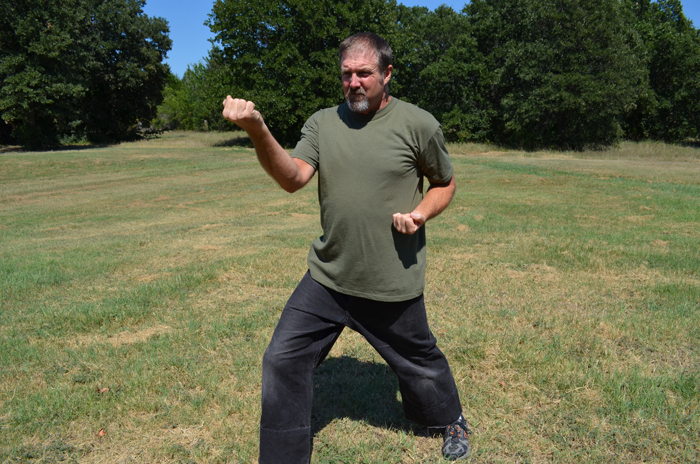
What to consider before setting up your home training program
So early on in my training I learned to identify my weaknesses and strengths and create simple training routines that dovetailed into my class instruction at the time. You see, you need to look at yourself all the time and adjust as needed. Create a path to success by having simple routines that target weak areas and build proper techniques in your Karate skills.
In the Complete Shotokan Karate home study system we have each belt level demonstrated for you. So your training program should be developed around the DVD curriculum and targeting your areas that need improvement.
Here are the major areas to consider in your training:
- Warm Up and Stretching – There are lots of different warm up exercises and stretching routines that help you get up and ready to workout. I like to use routines that cover the entire body as Complete Shotokan Karate is a total body system.
- Cardio and Strength – In this section you can really target weak areas in your body and promote a strong core. Running, sparring, Jump rope and walking are great ways to build up your cardio fitness. I have used light weights all the way up to a full gym to do strength training. However, you can become very strong and quick without using any weight. The best exercises are push ups, crunches, squats and pull ups.
- Learning the Complete Shotokan Karate for your belt level – Pay attention to the way techniques are demonstrated, review and take the time to do it right. After you have it right then use repetition to create strength, power, speed and muscle memory.
- Repetition of techniques
- Perfecting one-steps and self defense
- Perfecting Kata
After we consider our condition and how it affects the major areas of training we need to evaluate when equipment is needed or if we need a training partner for the current level of instruction. You can make it through most of the Complete Shotokan Karate course without a partner or equipment. However, I do believe it helps to have a heavy bag of some type, bag gloves and someone to help you out when you get into the advanced levels.
How long are workouts and how often do we need them?
Next we need to consider how long our workouts will be and how often we need to have them. I recommend that beginners try to train three to five days a week for 20 to 45 minutes. As you go up through the belt levels your number of days and time per day will increase. When I started martial arts, I had two 1 hour classes a week on Tuesday and Thursday. I trained at home three days, Monday, Wednesday and Fridays.
The nice thing about home study is the flexibility in scheduling your training. We recommend that you have a day or two a week that you work with the DVD on your level and two or three days for additional training that integrates improving your other areas of interest. So here is an example of a weekly generalized workout schedule:
Monday – Warm Up and Stretching, Cardio and Strength, Punches and Blocks, Kicks
Tuesday – Stretching, Practice with DVD
Wednesday – Warm Up and Stretching, Cardio and Strength, One-Steps/Self Defense, Kata
Thursday – Stretching, Practice with DVD
Friday – Warm Up and Stretching, Cardio and Strength, Bag Work, Punches and Blocks, Kicks
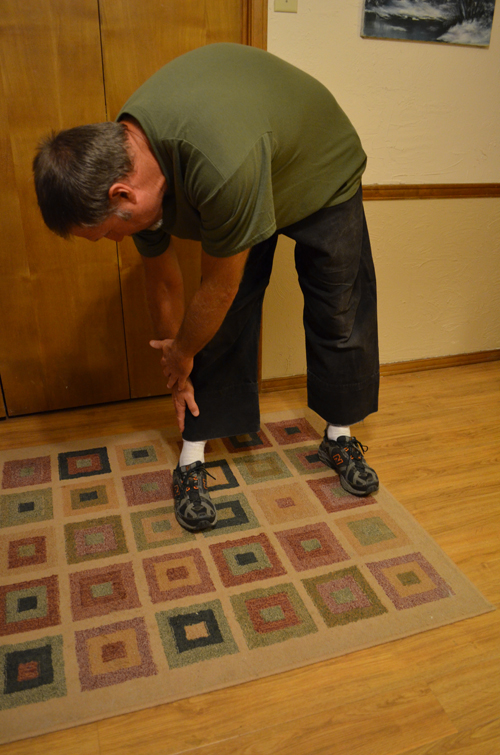
Choose a Class Below and Start Training!
At the end of the article we have included three general examples of Home Training Classes. These classes are simple and straightforward. These examples can be taken and modified according to your needs. As you begin to train in consideration of areas that need attention your workout patterns will change and things will fall into place.
Shotokan Karate Home Training Class 1
Warm Up
- Head Rolls (10 each direction )
- Shoulder Roll (10 each direction)
- Arm Circles ( Small to big circles then reverse directions)
- Picking Fruit (10 each side)
- Washing Machine (10)
- Hip Body Roll (10 each direction)
- Knee Circles (10 each direction)
- Ankle Flex (20, double and single)
Cardio and Strength
- Jumping Jacks (25)
- Stride Punches (25)
- Push Ups (10)
- Crunches (25)
- Front Knee Lift (10)
- Rear Knee Lift (10)
- Squats (10)
Simple Stretching
- Feet together – stretch down, stretch to the right then to the left, stretch back.
- Feet shoulder width – stretch down, stretch to the right then to the left, stretch back.
- Feet past shoulder width – stretch down, stretch to the right then to the left, stretch back.
Techniques (Stances, Punching, Blocking, Kicking)
- Jab (10 each side)
- Reverse Punch (10 each side)
- Jab+Reverse (10 each side)
- Front Stance – (10 Stepping into the stance)
- Fore Punch – (10 Stepping into the stance)
- Reverse Punch – (10 Stepping into the stance)
- Upper Block – (10 Stepping into the stance)
- Down Block – (10 Stepping into the stance)
- High middle and Low punch form horse stance (10)
- Stretch Kicks – straight, inside-out, outside-in (10)
- Front and Rear Snap Kicks (10)
- Thrust Kick (10)
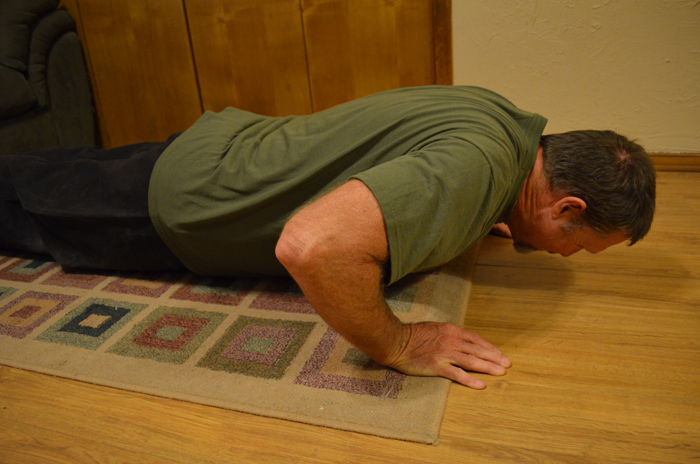
Shotokan Karate Home Training Class 2
Warm Up
- Head ear to Shoulder (10)
- Head chin to back (10)
- Shoulder stretch left and right side
- Stretch arm behind back right and left sides
- Alternating toe touch
- Knee pull both sides
- Sitting angle rotation
Cardio and Strength
- Jumping Jacks (25)
- Stride Punch (25)
- Push ups (10)
- Crunches (25)
- Mountain Climbers
- Prone position Back Kick
- Prone Position Side Kick
- Prone Position Fire Hydrants
Simple Stretching
- Feet together – stretch down, stretch to the right then to the left, stretch back.
- Feet shoulder width – stretch down, stretch to the right then to the left, stretch back.
- Feet past shoulder width – stretch down, stretch to the right then to the left, stretch back.
Techniques (Stances, Punching, Blocking, Kicking)
- Heavy Bag – Jab, Reverse, Jab + Reverse
- Heavy Bag – Jab + Reverse + Rear leg Snap Kick
- Partner with small pads – Jab + Reverse (with movement)
- Partner with small Pads – Jab + Reverse + Snap Kick (with movement)
- Partner with small Pads – Upper and Down Blocks with movement
- Partner with pads works with you on different combinations of Jab, Reverse, Snap Kick, Upper and Down blocks
- Heavy Bag – Working with maximum speed and power with any technique you want. 2 minutes.
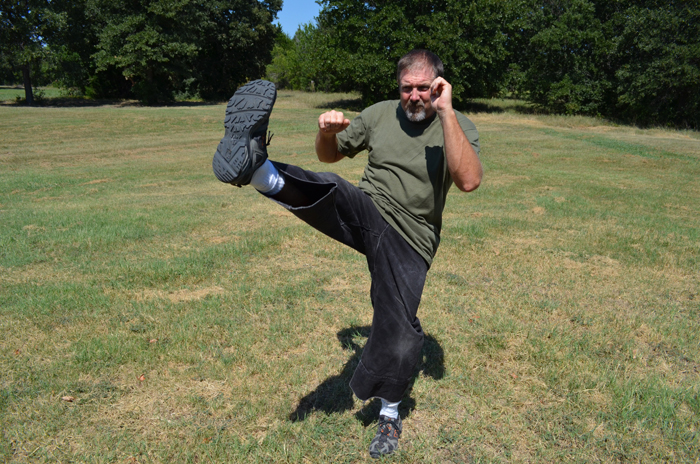
Shotokan Karate Home Training Class 3
Stretching – There are many great routines you can find and create your favorite stretches to meet your body type needs.
Cardio and Strength
Walking or Running – I would suggest if you are not already a walker or runner that you find some reading material to help you get started. Starting out to quickly and doing to much running or walking when your body is not prepared has ruined many a budding fitness career. Done correctly you can dramatically improve your cardio health and stamina.
Strength Training – Light weight routines are great. I used light dumbbells for several years as a supplement to my training. After I achieved black belt I created an olympic gym at my home and did some really advanced weight training.
One-Steps and Self Defense – work on your on-steps and self defense by yourself or preferably with a partner.
Kata Training – Very focused and intense Kata workout.
Weapons or Other – Learn a weapon like, Bo, Chucks, Sai, Kama, Etc… Or cross train in other martial disciplines.
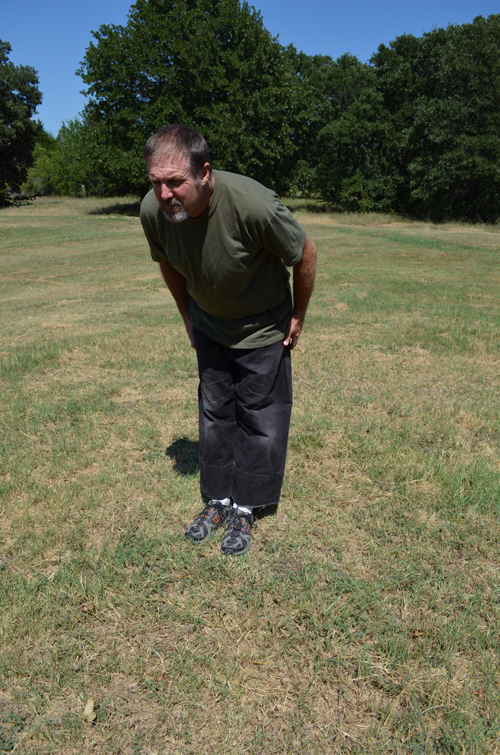
Want Even More Home Training Classes?
Create a free account to get started with our world-class shotokan karate course. Sensei Jon will teach you the entire whit to black belt curriculum, with over 50 follow-along classes and workouts. And we keep adding more every month. Start for free and get training!
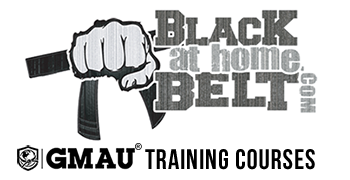
Excellent article! Great insight into how to structure home study time.
For marital arts study, I find it really helpful to mix it up – focus on different things on different days.
I started shotokan in1997. For two years stopped then went back 2007 gained black belt 2013, why so long because every so often i deliberatly missed a grading which i think is a good thing.what i would like to know which is the best part of the system to concentrate on at home for home training.when i train at the Dojo i go an hour and a half earlier before class and i concentrate on advanced kata mainly and Basics.I just like to know again about home training.
I have always tried to figure out what my weaknesses are in my martial arts and then target the weakness for improvement. In home training one has to be very responsible for examining themselves and evaluating where the work needs to be. In the Complete Shotokan system we have a defined testing and feedback loop that is in place to help target areas of improvement. When trying to improve an area make sure to that the way you are doing the technique is proper so you create acurate muscle memory. In our system the instructional video is the standard. Sometimes it is best to video yourself and take a close look at what you are doing. A video of yourself is often a real eye opener and you see things you have never noticed before. So set up workout routines for yourself that set you up for success by responsible choice of needed material. Happy Training…..
Dear John
Thank you for the feed back I received quite a few DVDS recently from an ex Shotokan student. One particular DVD, involved a lot of the famous Black Belt Instructors I think was filmed in the fifties or sixties, going through all the Katas from beginners and I think all the senior Black belt levels. It is filmed in silence but each Kata is shown twice. One of My favourite Kata Empi has improved ten fold.
Yours Sincerely
Paul Dunford
Very good info to learn and get better and better in life i did boxing judo kenpo karate in the 80s 90s 2000 weights silver bronze swimming fitness nutrition 2years supplement advisor usana 2015 study fitness nutrition white belt shotokan karate i love it
I was wondering if when I log in time in my student journal if I am aloud to log in my time spent on stretching and warm up. Or do I just log in time spent only on practice of techniqes, kata, ect. As an example, if I were to do 60 minutes total, counting 10 stretching and warm up, would I write on my student journal 50 minutes total, because stretching and warm up are not actully part of the curriculum.
That is an excellent question! So, if you do a fairly short warm up, or a warm up that is specficially for your karate training, then it can be included in your journal. This is because, your warm up then constitutes a part of your overall karate training for that day.
This only counts when there is a warm up, preceeding a karate training session. Not as a stand alone exercise workout.
So, if you decide to run 2 miles on day, that is not going to be in your journal. Lifting weights, doing cardio, etc.; does not go in your journal.
But, if you do like a 10-15 minute warm up, that is truly to get your body warmed up for karate, then that can be included.
Thanks for asking for clarification!
Sensei Michael
Thanks for posting Sensei. It helped me to revise my “game plan”.
Hello! I am 14 and want to learn karate but not getting any partner. So will I be able to learn it
Yes, you can learn a great deal of karate, through solo training. Make good use of a mirror if possible, of a training bag/punching bag, and other tools. You can learn all stances, blocks, strikes, and kata(s) alone. Once you get a partner, you can start to work on kumite and hand-to-hand sparring.
Would you recommend any vitamin supplements to use in my training? If so, what kind?
I have another question. This goes back to my old days of training with Master Hidetaka Nishiyama. This concers what is known as “Body Rotaion” Let me clarify. For example, lets say you were eecuting a left fore punc and a right reverse punc combination. The way i was taught is to rotate my hips to the right on the left fore punch and rotate my hips to the left on the right reverse punch. This almost an absolute rule with almost any technique taught. While watching the DVD it seems that the hips are keep straight thrughout the excution of the technique. Am I seeing this wrong? I know that there are variations with different Senseis, but i want to make sure that I am follwing your instruction in my traing and testing
Thanks
Your Student Robert Thompson
Can I do the DVD as a workout for 45 minutes and lift weights/run the next day?
5 workout pracrices-3 DVD 2 run and lift.
What benefit if any for testing under your system?
Yes the workout you describe is fine. At one point in my training I was lifting a lot and running almost every day along with my training. Listen to your body and workout accordingly. Testing has a benefit of increased instructor feedback and support. It also has goal setting which is important when learning so many different things over time. It gives you a plan of action and helps you develop the proper techniques.
hi . i want to know if punching bag help me to do kata in shotokan. i really like to use punching bag but our sensei didn’t learn us how to use it.
A punching bag is not usually used in Kata training. A punching bag is great for working on kicks and punches, developing proper technique and power. You can get a great workout in 15 min. of bag work. I recommend it.
Hi hopefully you can help my 9 year old son. He has been working g on his black belt application theory questions and is stuck on two questions.
What must be watched for when practicing blocks over a period of time. Is the answer to do with maintaining stances and power in the blocks?
And why is gedanbarai, gyakasuki and uraken significant in basic?
Hopefully you can help him to come up with the answer. He has answered the other 73 questions so he has done really well for 9.
First I would like to say that you could poll a group of 7 Master Instructors on any martial arts question and get 7 different answers/opinions. I will give you my opinion on theses questions.
Q: What must be watched for when practicing blocks over a period of time. A: Making sure that your support system is correct each and every time, stances, posture and alignment. Also, in shotokan we are redirecting the energy so there is a torso movement where the hip follows the block and a snap at contact to redirect the energy of the strike away.
Q: And why is gedanbarai, gyakasuki and uraken significant in basic? A: They are key fundamental self defense techniques one can utilize. (Note: There are many significant basic kihon and which ones are the most important is an opinion of the Master Instructor)
Hope this helps and good luck to you and your son!